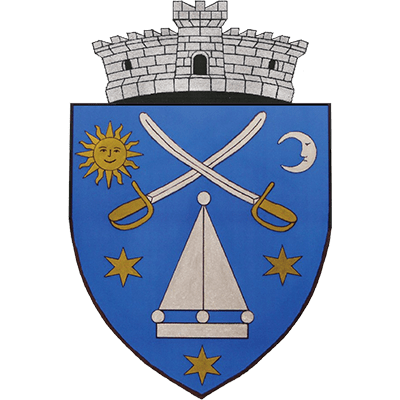
Illyefalva (Ilieni, Ilgendorf) is a Hungarian village in Transylvania, Romania, more precisely in Kovászna County, famous for its castle church, fortified in 1443 in the Kingdom of Hungary. The settlement is situated 8 km south of Sepsiszentgyörgy, in the valley of the Illyefalvi stream, on the right bank of the Olt River. It was named after the medieval patron saint of the Reformed church, standing on the hill above the village, the prophet Elijah (Illés).
Location: https://tinyurl.com/5n7bf6mc

In 1332, it was written as Helye, then as Villa Elye. In 1431, it appeared as Illiefalva, and in 1461 as Iliyefalva in the sources. In that year, the village had a parish church; its priest, Pál, paid 5 old “bannalis” according to the papal tithe register. In 1333, he paid 3 old bannalis, and in 1334, 2 bannalis. The bannnalis was a standardized measure for assessing taxes, crucial for the financial administration of the medieval Church in Hungary.

Before 1443, Antal (Antonius Siculus) was the parish priest (villa Sil Elie Siculorum de Sepsi), later the dean and canon of Fehérvár (Alba Iulia). From these records, it is also clear that the church’s patron saint was Saint Elijah (llyés), and the village got its name from its church.

The construction of its first church is dated to the era of the oldest churches and is linked to the baptism of Gyula in Constantinople, after which several Eastern saints received churches in Transylvania. Thus, Saint Elijah appears from the time of Constantine V, as found in the book of ceremonies of the Imperial court, yet he is missing from the list of 29 saints enumerated by Saint László (Ladislaus), to whom churches were dedicated. This is hypothetical.

The church standing today is representative of a later generation of churches. Its construction date is placed in the 15th century, more precisely around 1443. It is a creation of the Gothic period, but several variations of Renaissance floral decoration can be found in its style. The inhabitants fortified their church like a castle against repeated attacks.

The village of Iliyefalva (Ilieni) is recorded in the 1567 census with 62 homesteads. At that time, it was the second largest settlement in the Sepsi Seat Region after Sepsiszentgyörgy itself. In 1578, it was granted market town status and, until 1876, when it became a village again, it was governed by a magistrate consisting of a judge and 12 jurors.

The church is surrounded by an extensive double defensive wall. The outer wall forms an irregular hexagon with five bastions. Three of these are pentagonal, and two are rectangular. The tower was built above the gateway of the inner defensive wall. This also served as a bastion. Since Orbán’s description, part of the walls have collapsed.

The walls witnessed many storms in the past. In 1612, during the time of Gábor Báthori, it resisted the siege of Weiss. In 1658 and 1661, it was besieged and ravaged by the Tatar army. During the siege of 1658, the besiegers captured the fortress and took it by a trick, struck down many defenders, and took even more captive. (500 skulls were counted, and 800 prisoners fell victim.) Among them were the Reformed pastors of Árapatak (Arăpatac), Szentkirály (Sâncrăieni), Kilyén (Chilia), and Kisborosnyó (Borosneu Mic).

The church was completely rebuilt between 1782 and 1785 because it was damaged by an earthquake. At that time, it received a coffered ceiling. After the 1802 earthquake, a new tower had to be built. Its bell tower had to be rebuilt between 1812 and 1818. In 1940, the southeast corner tower collapsed, followed by the southwest corner tower in 1977. Its walls were severely damaged, with only a few remaining.

In 1910, it had 1,354 Hungarian inhabitants; in 1992, it had 996 inhabitants, of whom 978 were Hungarian, 17 were Romanian, and 1 was German. The writings mention a castle near Illyefalva on Szármány Hill, where traces of a trapezoidal rampart system can be seen. The castle of Illyefalvi Judit was also mentioned in a romance chronicle published in 1799.

Dear Readers, I can only make this content available through small donations or by selling my books or T-shirts.
Please, support me with a coffee here: https://www.buymeacoffee.com/duhoxoxa
You can check out my books on Amazon or Draft2Digital. They are available in hardcover, paperback, or ebook:
https://www.amazon.com/dp/198020490X or at https://books2read.com/b/boYd81

My work can also be followed and supported on Patreon: Become a Patron!http://Become a Patron!
Become a Patron! Donations can be sent by PayPal, too: https://tinyurl.com/yknsvbk7


https://hungarianottomanwars.myspreadshop.com/all
Subscribe to my newsletter here: https://tinyurl.com/4jdjbfkn
Here are more pictures of Illyefalva:



























